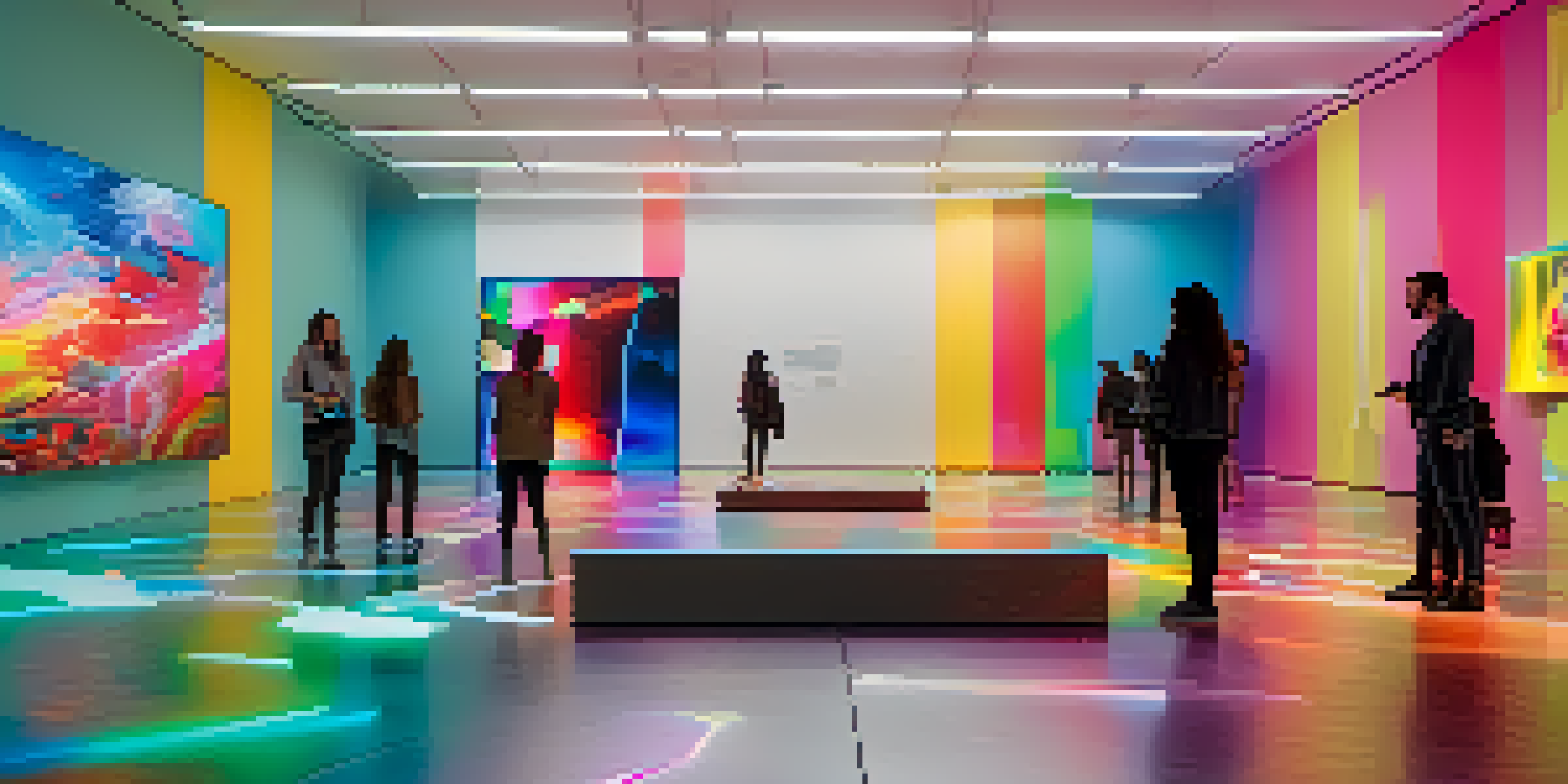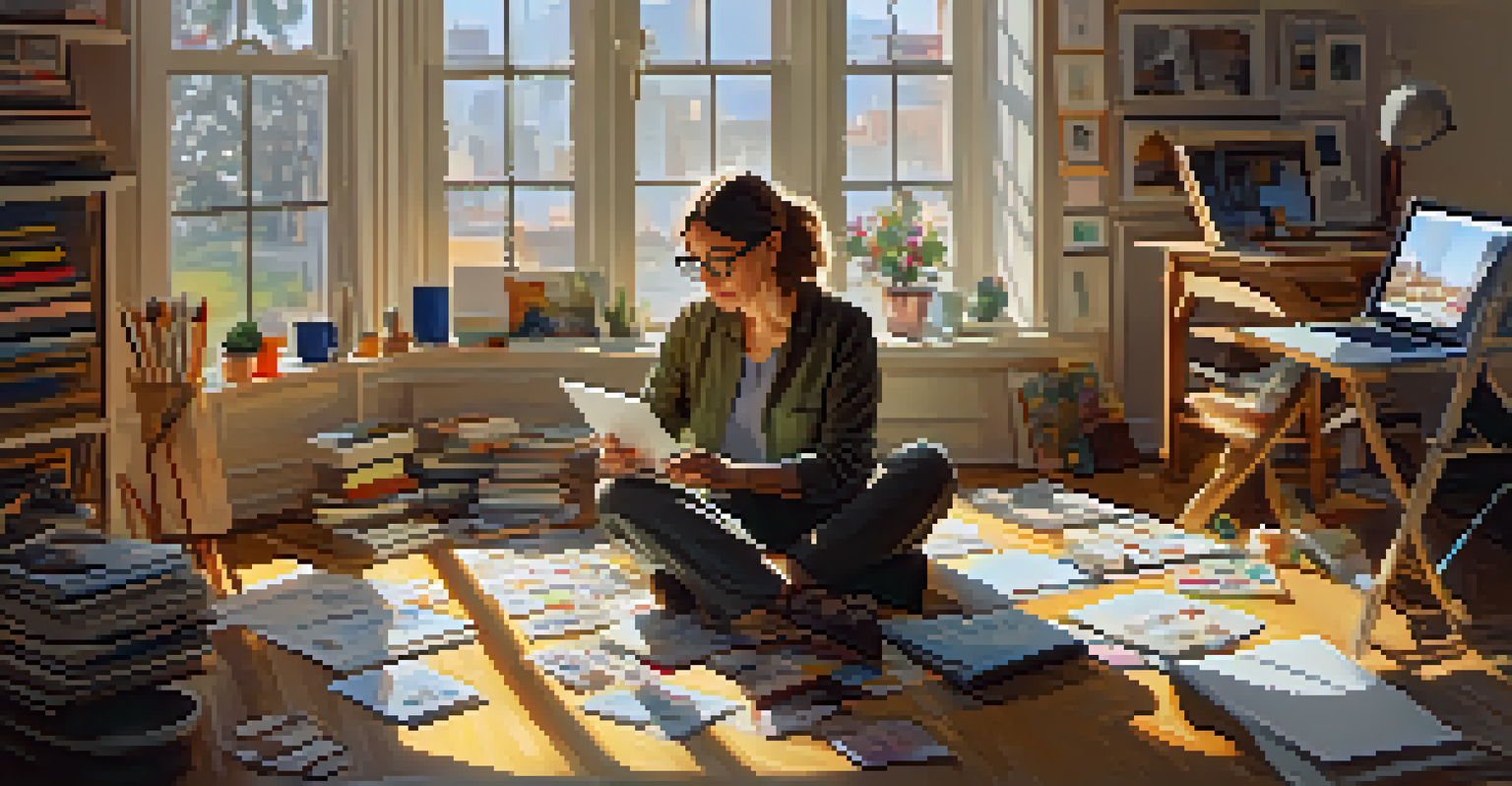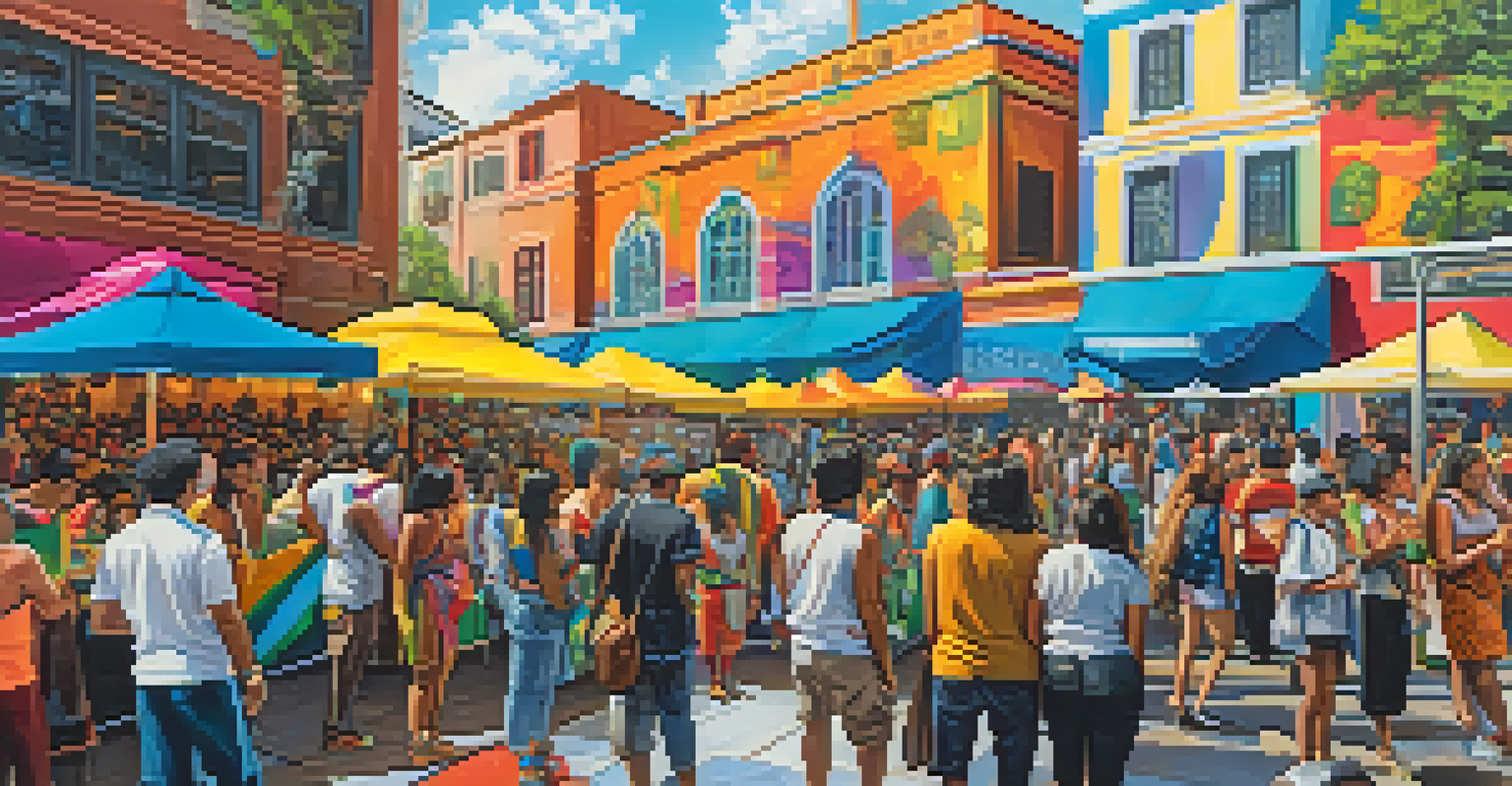The Impact of Technology on Art Ethics and Authenticity

Understanding Art Ethics in the Digital Age
Art ethics encompass the moral principles that guide artists and institutions in creating and sharing art. In the digital age, these principles are constantly being challenged by new technologies that alter how art is produced and consumed. For instance, the rise of digital reproductions has sparked debates about the ownership and originality of artwork.
Art is not freedom from discipline, but disciplined freedom.
As technology makes it easier to replicate and distribute art, questions arise about what constitutes 'authentic' art. Are digital copies as valuable as their physical counterparts? This dilemma forces artists and audiences alike to reconsider their definitions of authenticity in a rapidly evolving landscape.
Moreover, artists must navigate the ethical implications of using technology in their work, such as copyright issues and the potential for misrepresentation. These challenges highlight the need for a dialogue about the responsibilities of artists in the digital realm, ensuring that ethical considerations keep pace with technological advancements.
The Role of Artificial Intelligence in Art Creation
Artificial Intelligence (AI) is increasingly being utilized in art creation, raising intriguing ethical questions. For instance, when an AI generates a piece of art, who owns the rights to that creation? This question invites scrutiny on authorship and the value assigned to human versus machine-made art.

As AI tools become more sophisticated, they can mimic the styles of renowned artists, leading to debates about authenticity and originality. If an AI can replicate Van Gogh's style, does that mean the resulting artwork is as valuable as an original piece? This blurring of lines challenges traditional notions of artistic merit and invites a reevaluation of what it means to be an artist.
Art Ethics Challenge in Digital Age
Artists and institutions must navigate evolving ethical principles related to ownership, authenticity, and representation due to new technologies.
Furthermore, the use of AI in art can perpetuate biases present in the data it learns from, raising ethical concerns about representation and inclusivity. Artists and technologists must work together to navigate these complexities, ensuring that the art created by AI reflects a diverse array of perspectives.
Digital Ownership and NFTs: A New Frontier
Non-fungible tokens (NFTs) have emerged as a revolutionary way to establish digital ownership of artwork. By using blockchain technology, NFTs allow artists to sell unique digital pieces while providing buyers with proof of ownership. This innovation has sparked excitement and confusion about the future of art in the digital realm.
The role of the artist is to make the revolution irresistible.
Despite their potential, NFTs come with their own set of ethical dilemmas. Issues such as environmental impact, copyright infringement, and market speculation create a complex landscape for artists and collectors. Artists must weigh the benefits of NFT sales against the potential drawbacks, ensuring that they engage with this technology responsibly.
Ultimately, NFTs challenge traditional concepts of value and scarcity in art. As digital art becomes more mainstream, it's crucial for artists and collectors to navigate these changes mindfully, considering the ethical implications of their choices in this new digital marketplace.
Preserving Cultural Heritage Through Technology
Technology plays a vital role in preserving and showcasing cultural heritage, from 3D scanning to virtual reality. Museums and cultural institutions are increasingly using these tools to create immersive experiences that allow audiences to engage with art and history in new ways. This not only enhances accessibility but also broadens the reach of cultural artifacts.
However, the use of technology in preserving cultural heritage raises ethical questions about representation and ownership. Who decides which narratives are told through digital representations of art? This question is particularly pertinent for marginalized communities whose stories have often been overlooked.
AI's Role Raises Ownership Questions
The use of artificial intelligence in art creation brings forth debates about authorship and the value of machine-generated versus human-made art.
As we embrace technological advancements, it is essential to prioritize ethical considerations in the preservation of cultural heritage. Collaborating with communities and respecting their narratives can ensure that technology serves as a bridge to the past rather than a barrier.
The Impact of Social Media on Art Dissemination
Social media has transformed how artists share their work and connect with audiences. Platforms like Instagram and TikTok allow artists to showcase their pieces to a global audience, fostering a sense of community and collaboration. This democratization of art has empowered many to pursue their creative passions without traditional gatekeepers.
However, the rapid dissemination of art through social media also raises ethical concerns. The ease with which art can be copied and shared can lead to issues of plagiarism and misattribution. Artists must be vigilant in protecting their work while navigating this landscape, where visibility often comes at the cost of control.
Furthermore, the pressure to create content for social media can lead to a commodification of art, where the focus shifts from genuine expression to marketability. Striking a balance between engaging with audiences and staying true to artistic integrity is crucial for artists in the social media age.
Balancing Innovation with Ethical Responsibility
As technology continues to evolve, artists face the challenge of balancing innovation with ethical responsibility. Embracing new tools can lead to exciting possibilities, but it also requires careful consideration of the implications of those choices. Artists must remain aware of how their work intersects with societal values and ethical standards.
For instance, utilizing digital platforms can enhance accessibility but may also risk alienating traditional audiences. Striking a balance between embracing innovation and honoring the roots of artistic practices is essential to maintaining authenticity in art.
NFTs Redefine Digital Art Ownership
Non-fungible tokens (NFTs) challenge traditional concepts of value and scarcity, presenting both opportunities and ethical dilemmas for artists and collectors.
Ultimately, fostering an ethical approach to technology in art requires ongoing dialogue among artists, technologists, and audiences. By collectively navigating these challenges, we can ensure that the future of art remains vibrant, inclusive, and responsible.
Future Directions: Art, Technology, and Ethics
Looking ahead, the intersection of art, technology, and ethics will continue to evolve. As new technologies emerge, artists will need to adapt and rethink their practices while remaining true to their values. This adaptability will be crucial in navigating the rapidly changing landscape of the art world.
Moreover, engaging with ethical considerations will not only enhance the integrity of artistic practices but also foster a more inclusive and diverse art community. By prioritizing collaboration and dialogue, artists can work together to address the challenges posed by technology and create a more equitable future.

In this journey, the voices of artists, technologists, and audiences alike will be instrumental in shaping the narrative. As we move forward, embracing a shared responsibility for the ethical implications of art and technology will ensure a vibrant and authentic artistic landscape.